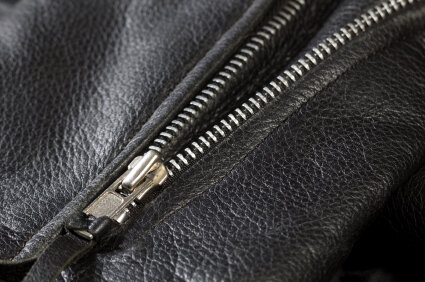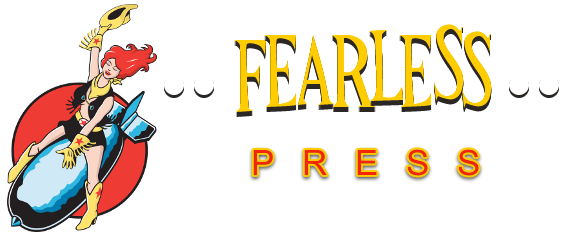 When asked about “leather culture,” one might conjure up images of black leather jackets, motorcycle clubs, strict hierarchies, and ultra-masculine men. In the world of kink, “leather” and “leather culture” can be a confusing and controversial topic. It’s a concept inundated with history and steeped in beliefs and practices that come from a variety of historical moments, regions, and social groups. Yet it’s almost universally presented as something overwhelmingly masculine.
When asked about “leather culture,” one might conjure up images of black leather jackets, motorcycle clubs, strict hierarchies, and ultra-masculine men. In the world of kink, “leather” and “leather culture” can be a confusing and controversial topic. It’s a concept inundated with history and steeped in beliefs and practices that come from a variety of historical moments, regions, and social groups. Yet it’s almost universally presented as something overwhelmingly masculine.
Introduce the idea of “leather women’s culture” and many people are just plain baffled. Yet leather women have been around and making a name for themselves since the 1970s with organizations like Samois, the world’s first women’s S/M group, which was founding in the Bay Area in 1978. The creation of Samois encouraged other “sexually deviant” women throughout the United States and other similar organizations quickly followed in major cities, including the Lesbian Sex Mafia of New York City (1981) and the Outcasts (1984).
However, the emergence of lesbian s/m organizations garnered negative attention as well as positive and early leather women found themselves under attack from all sides. The heteronormative mainstream rejected their queerness, while the feminism movement protested the violence of S/M and claimed leather women’s interest in S/M was “a reactionary antithesis to women’s liberation.” Leather women even suffered discrimination within the larger lesbian/queer community, often finding themselves excluded for supposedly emulating, perpetuating, and recreating patriarchal roles. Regardless of the outside pressures, leather organizations and meeting spaces continued to flourish throughout the 1980s, allowing leather women to learn new skills and meet potential partners that shared their love of rough play.
Amidst the celebrations of sisterhood and growth of leather identified organizations and sites, a dark shadow was forming over the community; the AIDS epidemic was emerging as a force to be reckoned with as it ravaged the gay and lesbian communities. Women, particularly sex workers, were perishing side-by-side with thousands of gay men (who became the face of the epidemic, obscuring its devastation of other segments of the population). The toll on the gay/lesbian community was immense, which prompted both men and women’s leather culture to shift its focus more towards sex education, community service, and building strong bonds of fraternity amongst those identifying as leather, regardless of their gender, race, or sexual orientation. The leather community became a support system for those infected with the virus as well as their partners, friends, and family.
It was in this time of turmoil the idea for International Ms Leather (IMsL) emerged. The gay leather community had launched successful Mr Leather titles on the local, regional, and international levels, most notably International Mr Leather (IML) in 1979. While the competitions were not originally conceived of as fundraisers, many of them collected funds for AIDS outreach and education while raising awareness of the gay leather lifestyle and community. The IMsL organizers hoped a women’s competition would draw attention to the women’s community while allowing them to help the broader leather community’s AIDS outreach.
When the first IMsL competition took place in 1987, it was clear the leather women’s community had grown significantly from the small, urban, mostly white lesbian base that made up the earliest leather women’s organizations. The sixteen women that crammed onto the tiny stage at DV8 represented a diverse swath of leather womanhood. They were lesbian, bi, heterosexual, and undefined; they were femme and butch; they’d traveled into California from the far reaches of the United States and Canada; but they all identified as leather. Judy Tallwing, the contestant that would go on to become the first International Ms Leather, summed up the nature of being a leather woman during her onstage speech. Answering why she was there competing, Ms. Tallwing said, “we’re here because we know we have to let the world know that we’re here…An invisible minority leaves itself open as easy prey for those individuals who would deny us our freedom, our very existence.”
Like most communities, leather women struggled with growing pains. Throughout the late 80s and 90s, transwomen and women of color railed against the often narrowly-defined boundaries of leather womanhood, pressing for more inclusion. When Brat Attack: Do-It-Yourself S/M, a Northern California ‘zine, published a piece in 1992 outlining widespread conflicts in the women’s community, race, class, and trans inclusion were major touchstones. By 1994, clear steps were underway to broaden general notions of leather womanhood when Vi Johnson began publishing Black Leather in Color, a quarterly magazine designed to showcase men and women of color involvement in the leather lifestyle.
With the rise of the digital age, leather women’s culture has spread faster and further than ever. As leather women’s culture has expended to embrace women (and their allies) of various race, class, educational, and religious backgrounds, the core guiding principle remain the same – to create a safe and welcoming space for women of all persuasions that express an interest in S/M, sex education, community service, honor, loyalty, and sisterhood.
